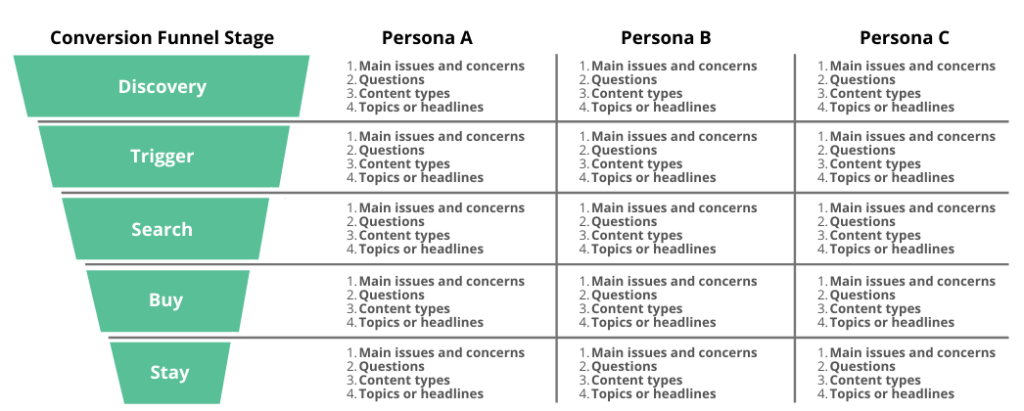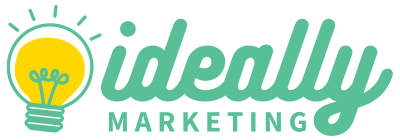Many B2B marketers make the mistake of focusing too much on one stage of the buyer’s journey. Some produce most of their content for the top of the funnel — prospects who have just begun exploring their problem. Others have almost nothing to offer these awareness-stage prospects and go heavy on case studies and sales sheets.
Another common mistake is overlooking the fact that each persona has a unique buyer’s journey with differing questions and needs. The primary persona gets all the attention, and marketers lose out on capturing the interest of their other personas.
To capture the highest number of prospects and convert them, you need to target each of your personas throughout their individual journeys. In this post, I’m sharing a process that makes it simpler to map your content to each persona’s buyer’s journey.
Identify your personas
First, be sure you’ve identified your personas and have validated your hypotheses about them. The information your personas are based on forms the foundation of your content strategy. Because your content strategy addresses the questions your personas ask and the topics they care about at each stage in the buyer’s journey, it’s essential that your personas are based on fact, not guesswork. If you’ve made inaccurate assumptions about your personas, you’re likely to get your content strategy wrong.
Here’s a 5-step process to validate your personas that won’t take months to complete.
The buyer’s journey funnel map
Once you’re confident in your personas, you can move on to outlining each one’s buyer’s journey. (This step is a fun one because you get to dig into the psychology of what’s going on in each persona’s mind at each stage.)
It’s helpful to view the buyer’s journeys in the context of the marketing funnel, as presented below.

How to map your content
The buyer’s journey is made up of four primary stages: Awareness, Consideration, Decision, and Retention. But I like the version Marketo uses, which breaks the journey into five stages: Discovery, Trigger, Search, Buy, and Stay. (Discovery and Trigger together make up the Awareness stage — it’s helpful to think of the action or situation that triggers the search for a solution separately). First, for each persona at each stage in the funnel, answer the following questions:
- What are the main issues or concerns that each persona has at each stage in their journey?
- What questions is each persona asking at each stage in their journey?
- Which content types is each persona most likely to consume at each stage in their journey?
Finally, you’ll brainstorm topics or headlines based on what you uncovered from answering questions #1 and #2 above. These topics are the ones most likely to capture each persona’s attention at each stage in the journey.
Mapping makes you fully prepared to create an editorial calendar
With your list of content types and topics in hand, you’ve completed the mapping process. You’re now fully prepared to create your editorial calendar.
Most content strategies that fail do so because they’re either based on guesswork about the personas and/or they aren’t addressing the needs of each persona at each stage in the buyer’s journey. Mapping your content precisely to each persona in each stage will ensure that your content is meeting the needs of all prospects, no matter where they are in their journey.
Schedule a call to share what’s holding you back from better marketing content, and I’ll let you know if I can help and how. If I can’t help, I’ll recommend someone who can.

